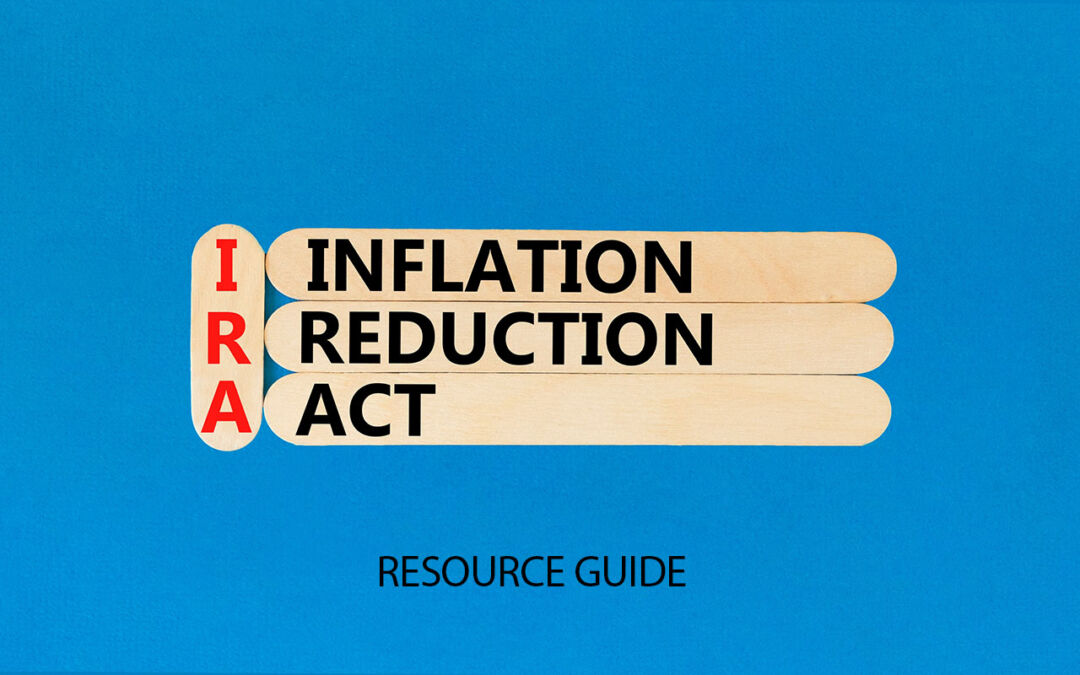Evaluating the Inflation Reduction Act: Job quality, spillovers, and place-based policymaking

The Inflation Reduction Act of 2022 is the most significant economic and clean energy jobs program the United States has ever initiated. To improve overall understanding of whether the new law has been effective in achieving its economic policy goals, the Washington Center for Equitable Growth is engaging with policymakers and academics to discuss evaluation and research opportunities that have emerged since its implementation. Through the release of our Request for Proposals: The economic effects of the Inflation Reduction Act, our goal is to stimulate new research on the law’s impact on local and regional labor markets, job creation, innovation, and investment.
The questions and answers outlined below serve as a resource for academics seeking to sharpen their research questions on how the Inflation Reduction Act is shaping distributional economic outcomes on inequality and growth.
What key provisions of the Inflation Reduction Act are most important for researchers seeking to explore its effectiveness in revitalizing local labor markets?
The Inflation Reduction Act was initiated by the Biden administration to respond to decades of U.S. economic and trade policies that resulted in hollowed-out communities, brittle global supply chains, and the consequences of these baleful economic dynamics on workers and their families amid rising income and wealth inequality. The law marked a shift toward economic and clean energy policymaking that deploys public investments to create jobs in local economies. Initial evidence suggests that IRA investments have generated more than 400,000 new clean energy jobs across 48 states and Puerto Rico, while other evidence suggests that if fully implemented, the law’s energy tax credits could lead to 1.7 million new U.S. jobs by 2030.
Job creation is a key economic aim of the Inflation Reduction Act, but the law is specifically designed to create good jobs, which have been shown to benefit both workers and businesses. Many of the law’s policy levers targeting the creation of good jobs offer strong opportunities for policy evaluation.
More research is needed to understand the effects of IRA investments on the quantity and characteristics of jobs created or displaced, as well as the law’s effects on local and regional labor markets, including whether there are notable differences across places. More specifically, are there regional characteristics associated with different outcomes?
What labor provisions within the Inflation Reduction Act may be underappreciated or misunderstood by researchers?
The Inflation Reduction Act’s prevailing wage provision requires IRA-funded projects to pay wage rates at or above industry standards for comparable positions, attempting to incentivize companies to fairly compensate workers on publicly backed projects. These wage rates are determined by the U.S. Department of Labor’s Wage and Hour Division.
In addition, the IRA apprenticeship provision requires these projects to employ apprentices from registered apprentice programs, meeting a three-pronged requirement that examines total project-labor hours completed by apprentices, the number of apprentices hired by credit recipients, and the daily ratio of apprentices-to-skilled journeyworkers. Combined, the prevailing wage and apprenticeship provisions allow projects receiving IRA tax credits and meeting these standards to receive a multiplier of up to five times their tax credits.
Project labor agreements, or PLAs—collective bargaining agreements between contractors and labor organizations before a project begins—typically outline wages, benefits, working conditions, and dispute-resolution procedures for workers. In the context of the Inflation Reduction Act, PLAs serve as a tool for gauging compliance with the law’s prevailing wage and apprenticeship provisions and also can provide employers protection against tax penalties for errors in implementing these provisions. This helps firms with IRA-funded projects maintain their five-times bonus credit, while also encouraging other high-road labor practices, such as dispute resolution mechanisms, guarantees against strikes or lockouts, and worker safety protections.
These provisions provide researchers with a framework for assessing the Inflation Reduction Act’s broader impacts. Researchers should explore what role the IRA labor and community protections are playing in efficient and effective project delivery and outcomes for workers, communities, and firms.
How can researchers begin to evaluate the effectiveness of the Inflation Reduction Act’s investment in place-based policy?
The Inflation Reduction Act was designed to address regional and local economic inequality through place-based policymaking. Directing clean energy investments to economically distressed regions, particularly those which have historically relied on fossil fuels, is an attempt to limit acute economic shocks such as the departure of dominant employers, which have historically had spillover effects to neighboring communities as well.
One mechanism for achieving this goal is the energy community bonus credit. This credit gives developers a 10 percent additional tax credit for clean energy projects in designated energy communities, defined as either former brownfield sites, metropolitan statistical areas with jobs or with tax relationships with fossil-fuel extractive industries, or with unemployment rates higher than national average or former coal communities.
A similar mechanism, the clean electricity low-income community bonus credit, grants a 10 percent to 20 percent increase in the so-called 48E clean electricity investment tax credit for projects sited in low-income communities, on American Indian land, in low-income residential buildings, or those defined as low-income economic benefit projects. These policy designs aim to spur economic revitalization in the areas most exposed to shocks and hardest hit by the clean energy transition.
This design creates avenues for researchers to evaluate the law’s economic effects on local and regional policymaking. More research can determine how states and municipalities are leveraging investments, braiding or stacking them with other major federal investments, or using them to access other financial tools. Where have IRA investments occurred, and how have they connected to local economic development? How are IRA place-based policy designs affecting supply-side activity or demand-side behavior in communities affected by previous manufacturing declines or energy shocks?
How can researchers leverage energy and economic data to analyze the Inflation Reduction Act?
Researchers evaluating the Inflation Reduction Act’s place-based and regional spillover effects may encounter data-availability challenges, but there are public resources, such as USASpending.gov, which allow researchers to track how investments are flowing into these communities and examine whether projects are meeting their intended goals. State variation will also likely provide opportunities for policy-relevant natural experiments, and state utility data could serve as a valuable tool for assessing energy investment impacts and consumption trends at a granular level.
Some examples of the use of innovative data include this research in the Journal of Public Economies by Peter Christensen at the University of Illinois at Urbana-Champaign and co-authors, which accesses data from Illinois’s Home Weatherization Assistance Program to develop a machine-learning function that ultimately aims to increase the benefits per dollar invested. Similarly, a working paper published by the U.S. Census Bureau uses comprehensive administrative data to track the effects of the coal industry’s transition on workers’ earnings.
Conclusion
By focusing on the specific needs of a community and acknowledging that one size does not fit all, researchers can evaluate the Inflation Reduction Act’s place-based policy initiatives to help identify what is working and where challenges remain with the law’s policy design and delivery mechanisms. We hope this resource guide helps researchers prepare their applications in response to our Request for Proposals: The economic effects of the Inflation Reduction Act.
Did you find this content informative and engaging?
Get updates and stay in tune with U.S. economic inequality and growth!



